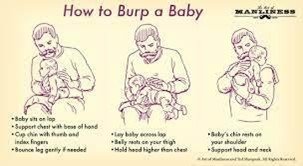A nurse is reinforcing teaching about formula feeding to a group of parents of newborns.
Which of the following statements by one of the parents indicates a need for further teaching?
"I will burp my baby halfway through each feeding."
"I will watch for signs my baby is full and stop the feeding."
"I will ensure my baby's feedings last 10 to 15 minutes."
"I will give formula to my baby at room temperature."
The Correct Answer is C
Choice A rationale: This statement is correct. Burping the baby halfway through each feeding can help release air and prevent discomfort from gas build-up.
Choice B rationale: This statement is correct. It is essential to watch for signs of satiety in the baby, such as slowing down sucking, turning away from the bottle, or becoming relaxed.
Stopping the feeding when the baby is full helps prevent overfeeding.
Choice C rationale: This statement indicates a need for further teaching. The duration of feeding can vary for different babies, and it is not advisable to limit the feeding time to a specific duration like 10 to 15 minutes. Babies have different feeding patterns and may take longer or shorter periods to finish a feeding. It is essential to allow the baby to feed until they are full and satisfied.
Choice D rationale: This statement is correct. It is safe and appropriate to give formula to the baby at room temperature, or it can be warmed if the baby prefers it that way. However, never heat the formula in the microwave as it can create hot spots that may burn the baby's mouth. Instead, warm the formula by placing the bottle in a bowl of warm water. Always test the temperature on the inside of your wrist before feeding the baby to ensure it's not too hot.

Nursing Test Bank
Naxlex Comprehensive Predictor Exams
Related Questions
Correct Answer is B
Explanation
Choice A rationale:
Administering the hepatitis B vaccine monthly until the newborn tests negative for the hepatitis B surface antigen is not the appropriate treatment for a newborn whose mother is positive for the hepatitis B surface antigen. Immediate intervention is required to prevent transmission.
Choice B rationale:
The newborn of a mother who is positive for the hepatitis B surface antigen should receive hepatitis B immune globulin (HBIG) and the hepatitis B vaccine within 12 hours of birth. HBIG provides passive immunity to the baby while the vaccine stimulates active immunity.
Choice C rationale:
Administering hepatitis B immune globulin for 1 week followed by the hepatitis B vaccine monthly for 6 months is not the correct treatment plan. Immediate intervention is necessary to prevent transmission to the newborn.
Choice D rationale:
Administering the hepatitis B vaccine at 24 hours followed by hepatitis B immune globulin every 12 hours for 3 days is not the appropriate treatment. Hepatitis B immune globulin should be given within 12 hours of birth, not over several days.
Correct Answer is C
Explanation
Choice A rationale: This statement is correct. Burping the baby halfway through each feeding can help release air and prevent discomfort from gas build-up.
Choice B rationale: This statement is correct. It is essential to watch for signs of satiety in the baby, such as slowing down sucking, turning away from the bottle, or becoming relaxed.
Stopping the feeding when the baby is full helps prevent overfeeding.
Choice C rationale: This statement indicates a need for further teaching. The duration of feeding can vary for different babies, and it is not advisable to limit the feeding time to a specific duration like 10 to 15 minutes. Babies have different feeding patterns and may take longer or shorter periods to finish a feeding. It is essential to allow the baby to feed until they are full and satisfied.
Choice D rationale: This statement is correct. It is safe and appropriate to give formula to the baby at room temperature, or it can be warmed if the baby prefers it that way. However, never heat the formula in the microwave as it can create hot spots that may burn the baby's mouth. Instead, warm the formula by placing the bottle in a bowl of warm water. Always test the temperature on the inside of your wrist before feeding the baby to ensure it's not too hot.

Whether you are a student looking to ace your exams or a practicing nurse seeking to enhance your expertise , our nursing education contents will empower you with the confidence and competence to make a difference in the lives of patients and become a respected leader in the healthcare field.
Visit Naxlex, invest in your future and unlock endless possibilities with our unparalleled nursing education contents today
Report Wrong Answer on the Current Question
Do you disagree with the answer? If yes, what is your expected answer? Explain.
Kindly be descriptive with the issue you are facing.
